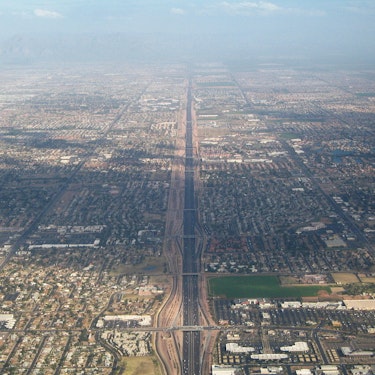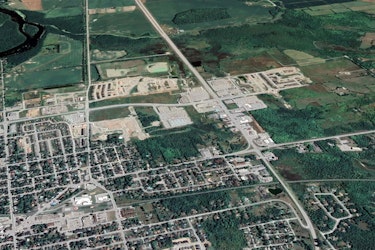Planning for cities, suburbs, and rural areas involves a dynamic set of objectives that are crucial to the development of sustainable cities. We must successfully construct the boundaries between each, where urban meets suburban, and where suburban meets small town, in addition to taking into account what is there within each. Urban sprawl, or what occurs when communities expand quickly from city centres, has drawn the attention of urbanists in recent years. What happens when cities "sprawl" out of control, and can egalitarian communities be created through the New Urbanism design principles? Planning methodology known as "New Urbanism" was developed as a counter to the post-World War II development trend of urban expansion.
New Urbanism gives human-scaled places a place outside of urban cores by reintroducing ideas to create walkable blocks, mid-sized housing, and facilities like grocery shops, schools, and restaurants nearby. With rezoning regulations that establish varied communities with a goal of being only a five-minute walk from the centre to the farthest edge, these developments resemble mini-cities in many ways. The concepts and long-term objectives of New Urbanism are laid out in a manifesto that encapsulates the movement's values.
Metropolitan sprawl is the outward expansion of development into rural areas from urban centres. It is frequently chaotic and poorly thought out, making it an unsustainable method of development. The natural environment, ecosystem, and community suffer greatly from urban sprawl. According to Ball State University, "inefficient land distribution and failure to limit space between and surrounding developments leads to fragmentation of the habitats that are left after the development." Many socioeconomic and cultural factors contribute to sprawl. For instance, during the past two years, we've seen people leave urban areas in search of less crowded locales where they can have more room, where property values are cheaper, and where commuting is generally of higher quality. Urban sprawl generally isolates neighbourhoods from commercial areas, making residents dependent on their cars.
Fortunately, sensible expansion, innovative urbanism, and community involvement are alternatives to urban sprawl.

Credit: Urban Design lab
EDUCATION
Lack of education is one of the main issues with urban sprawl. Communities are more inclined to take action to stop irresponsible development if they are informed about the detrimental effects of urban sprawl. Communities need to be aware of the negative effects, such as increased traffic from more commuting people and pollution from a lack of public transportation. Community and family-owned businesses are impacted as giant retail outlets take their place. Other issues include tax increases and the conversion of farmland into commercial malls and housing developments. After receiving education, the community is more likely to take action.
COMMUNITY ACTION
Urban sprawl can be stopped by community involvement and action. Local projects can be urged by the community to petition councillors to support more environmentally friendly development strategies. The local government might be urged by community members to collaborate with groups that support modern urbanism and smart growth. Government is considerably more likely to side with voters if there is sufficient community involvement. Investors can buy land that is prone to urban sprawl, and local media outlets can help raise awareness of its drawbacks and effects. Locals and business owners who are negatively impacted by development can also voice their opinions by giving examples of how urban sprawl has already negatively impacted them or will negatively impact them in the future.

Credit: ArchDaily
SMART GROWTH
The goal of smart growth is to prevent urban sprawl by ensuring that the community and the land are not endangered during development. The goal of compact development, sometimes referred to as mixed-use, is to create a greater feeling of place, according to planners and architects who support smart growth. Instead of separating different regions, mixed-use development brings together residential areas with commercial and job areas, allowing for more pedestrians and public transportation instead of traffic and pollution. Communities should also think about putting smart growth audits into practise, which offer an evaluation of the area and community to see how well current regulations adhere to the principles of smart growth.
NEW URBANISM
According to Ball State University, growth can occur without the pollution and landscape devastation that come with expansion when attention is shifted away from the suburbs and into the central city. This is the underlying idea of new urbanism. Urban sprawl is decreased through revitalising existing urban centres and villages, which also helps to maintain the natural environment. By restoring dirty and decaying places, new urbanism aims to transform existing towns and neighbourhoods into diversified districts.

Credit: Britannica
The goal of New Urbanism and other urban planning strategies is to lessen the detrimental effects of arbitrary and unsustainable urban growth. Development can be more intelligent and land use more deliberate by anticipating future population expansion and preparing for spatial designs. One of the most effective frameworks we have for controlling urban sprawl is new urbanism, which places a focus on zoning regulations, growth restrictions, middle-sized housing complexes, and walkable neighbourhoods.
